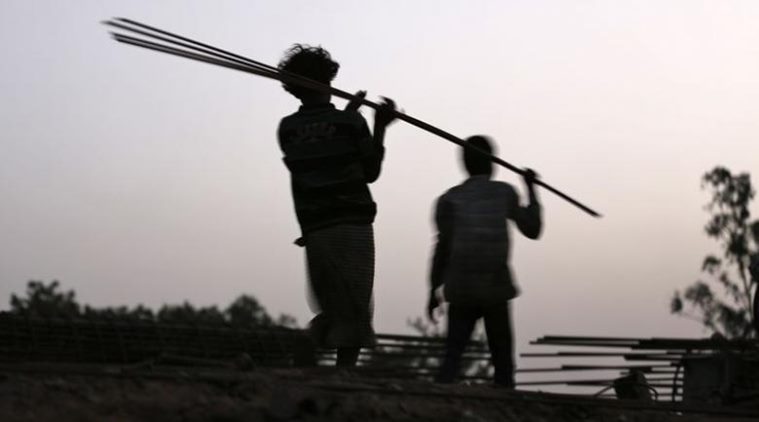Who wields AI, and how
Source: Anupam Guha
 Automation, a product of recent advances in Artificial Intelligence (AI), has been recognised as a harbinger of a different era of socio-economic relations. Studies by Deloitte in UK and McKinsey in the US are estimating that currently demonstrated technologies will kill from a third to a half of all jobs within a decade. In this scenario, what should be India’s national policy towards AI?
Automation, a product of recent advances in Artificial Intelligence (AI), has been recognised as a harbinger of a different era of socio-economic relations. Studies by Deloitte in UK and McKinsey in the US are estimating that currently demonstrated technologies will kill from a third to a half of all jobs within a decade. In this scenario, what should be India’s national policy towards AI?
Devoid of an urgent push by the government to frame policy on AI, Indian labour will face a deep crisis. Over 90 per cent of the Indian workforce is organised informally and is vulnerable to sweeping economic upheavals. As AI proliferates, the contractual/gig economy will expand, amplifying precarity and triggering a downward spiral in wages. Construction and manufacturing labour, already atomised and benighted by the contractual system, will not be able to collectively bargain against an industry when it starts adopting 3-D printing technology. Farm labour, already in peril due to pricing, will suffer due to the glut of imported cheap food produced by automated farming and the agricultural robotics industry being conceived in East Asia. Vehicle assembly line production is already being replaced by robots.
In IT, hiring has decreased by more than 40 per cent in the last year with sharper cuts predicted. Large parts of the IT sector are dependent on outsourcing and those jobs are at risk. Job creation figures in the non-farm formal sectors have fallen by half from 2011 to 2016.
The impoverished conditions of India present an opportunity for the government to consider public works (works needed to raise living standards) distinct from jobs (work which the market will provide) as a means to ensure employment. The government must invest heavily in large infrastructure and development projects, and liberally use automation to free up sections of the workforce to work on them. Simultaneously, the government must encourage horizontal cooperatives based around AI to ensure knowledge-worker controlled decentralised progress in AI on the ground.
How does this work? Let us start with the complex agriculture question.
For India to transition to a more just, equitable, and sustainable economy, it is considered necessary to shift the workforce out of agriculture. The freed rural workforce is urgently needed to develop the abysmal rural infrastructure and industry. Automation presents an interesting opportunity here since it provides a means to transform agriculture. Even a clunky and awkward farming robot, never needing breaks or nourishment, could keep doing a small action ad infinitum, and thus replace a group of farmers over time, which it cannot individually replace. It is easier to allot land to a smaller farming population (only 10 per cent farmers in India own land), and teach them how to use automated machines to get higher, more consistent yields in conjunction with other improved farming practises.
But freeing of agricultural labour should be done only after launching a national industrial and infrastructure-centric public works programme, augmented with automated machinery and processes, for the benefit of rural communities, which will absorb this labour. This transition cannot be left to the mercies of the market. Recent experiments at reskilling have demonstrated its inadequacy in the absence of a programme to absorb labour. An example of public works that India urgently needs is affordable housing for its huge population. Mass renewable energy generation should be another area of focus. Technologies like 3-D printing, earlier mentioned as a peril for construction workers, could become a catalyst for getting the sort of productivity needed for such ambitious projects.
However, the larger benefit of AI in the Indian context comes not in the domain of productivity but in distribution and management, which opens doors to consider alternate ownership models. Machine learning processes can be used for enhancing logistics and operations. Better distribution and management allows for two things. First, it allows worker run co-operatives to become efficient enough to compete against traditional corporate structures, allowing the government to incentivise such formations, in turn increasing worker prosperity. AI-based cooperatives can be the bedrock of a more just economy. Second, it necessitates creating governmental agencies to use AI, under public oversight, to run PSUs better.
Finally, structures of governance could be strengthened and improved with AI. For example, statistical analysis can be used to detect malpractices, fraud, and corruption. Already, AI is being used to combat propaganda and spurious news. Computational linguistics can be used to preserve the vast cultural heritage of our marginalised peoples, and AI could be a boon for understaffed but vital agencies.
Ultimately, AI like every other productive force in the past, is a tool. It will affect social relations depending on who wields it and how.
All of this calls for an enlightened education policy that recognises the paramountcy of quality education in an age of automation. In a future economy dominated by AI, education must be free, universal, and of high quality. AI, in the hands of a visionary Indian government, instead of being an implacable foe of labour, can become its stalwart defender. It can unite the goals of development and public prosperity.
| }
|